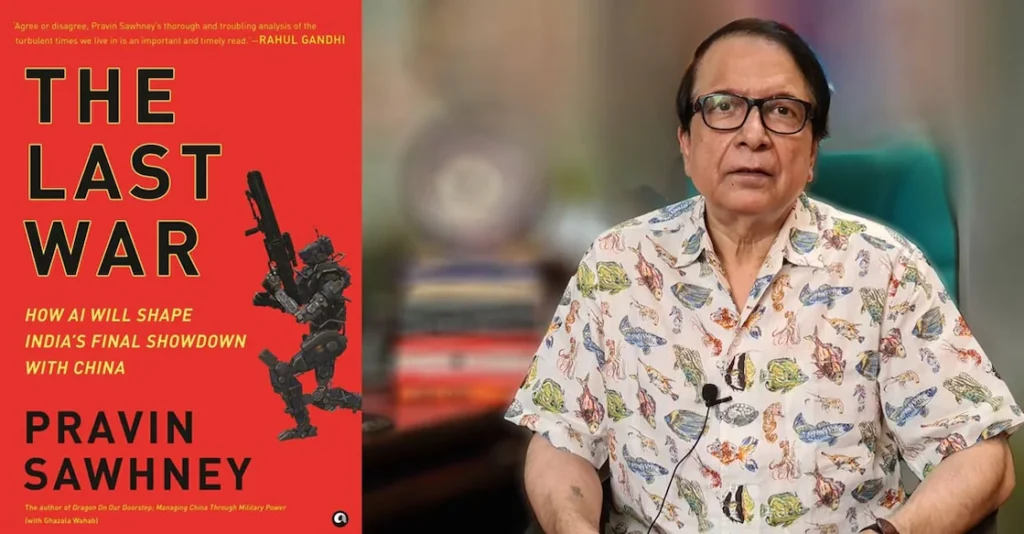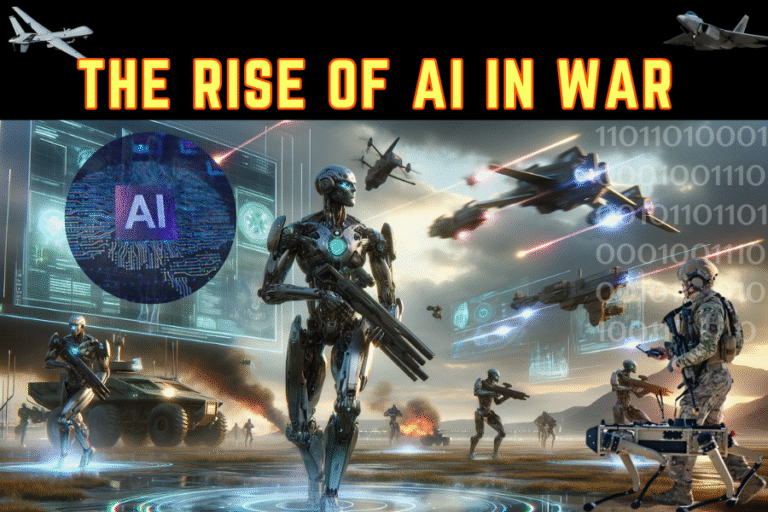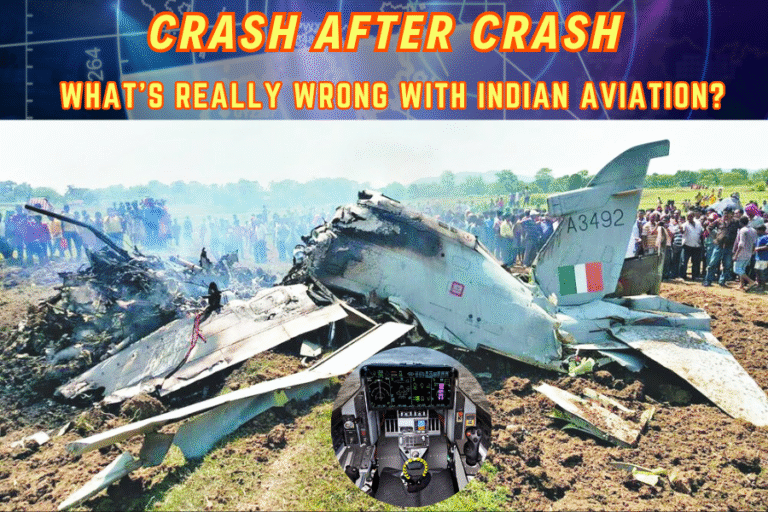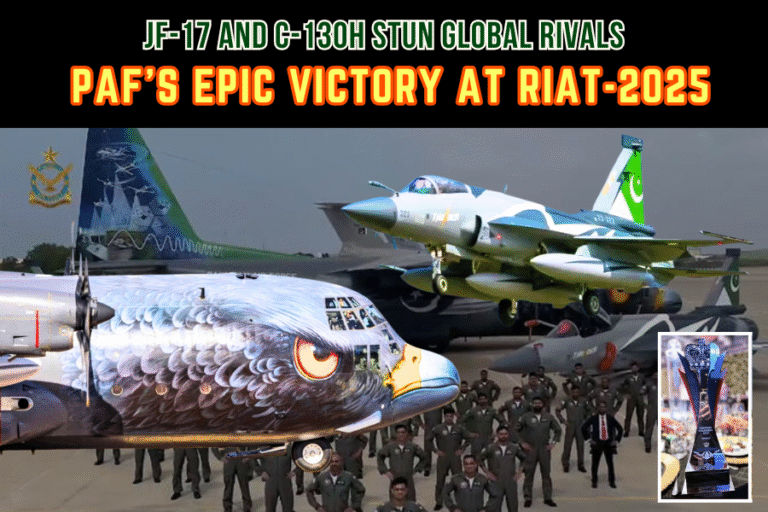(Reviewed by Khalid Masood)
Pravin Sawhney’s The Last War is a meticulously researched and sobering exploration of the shifting paradigms of modern warfare, spotlighting the urgent strategic challenges India faces in its evolving conflict with China. Published by Aleph Book Company, this 424-page work combines deep expertise in defence technology with incisive geopolitical analysis to provide a nuanced view of how artificial intelligence (AI) and emerging technologies are transforming the battlefield — and India’s preparedness for this new reality.
Overview
At its core, The Last War presents a stark warning: India is dangerously behind China in integrating AI and related technologies into its military doctrine. Sawhney argues that while China has rapidly moved toward “intelligentized warfare,” leveraging AI for battlefield analytics, cyber warfare, autonomous platforms, and command decision-making, India remains shackled by traditional doctrines, fragmented institutional thinking, and political inertia.
Sawhney contends that India’s fixation on Pakistan as its primary security threat has led to a strategic blind spot along the northern border. The 2020 Galwan Valley clashes were merely a glimpse of a larger conventional and high-technology confrontation looming in the Himalayas — a confrontation India is ill-prepared to handle unless urgent and sweeping reforms are undertaken.
May 2025 Indo-Pak Conflict
The relevance of Sawhney’s thesis on AI-driven warfare and network-centric tactics became strikingly evident during the Indo-Pak conflict of May 2025. On the night of May 6-7, the Pakistan Air Force (PAF) employed advanced network-centric operations combining real-time data fusion, AI-assisted targeting, and electronic warfare to devastating effect. PAF successfully shot down three Indian Rafale fighter jets, one Su-30 MK, and one Mig-29, alongside intercepting and neutralizing an Indian Heron reconnaissance drone.
This engagement demonstrated the critical role of AI-enabled situational awareness and connectivity in modern air combat — capabilities that Sawhney highlights as essential for battlefield dominance in The Last War. The effectiveness of PAF’s integrated tactics underscored how AI and technological integration can decisively tilt the scales, exposing shortcomings in Indian defences that Sawhney cautions against.
Key Themes and Insights
- Intelligentized Warfare and AI: The book introduces readers to the concept of intelligentized warfare, where AI-driven systems dominate cyber, electronic, and kinetic domains. Sawhney paints a chilling futuristic scenario of a Chinese cyberattack in 2024 unleashing robotic combat units, drone swarms, hypersonic missiles, and electronic warfare that disrupt Indian forces on multiple fronts simultaneously. The narrative underscores the transformational impact of AI on speed, tempo, and decision superiority in future conflicts.
- Strategic Imbalance: Sawhney provides an exhaustive assessment of Chinese military modernization — its joint command structures, integrated multi-domain capabilities, and emphasis on cyber and space warfare — contrasting it with India’s outdated, compartmentalized approach. He criticizes India’s political leadership and military establishment for not fully appreciating the nature of the threat, underscoring institutional and ideological barriers that hinder progress.
- The Invisible and Cyber Wars: Significant portions of the book discuss the current invisible wars being fought in cyberspace, electromagnetic spectrum, and information domains. The author details how China’s preparedness in cyber warfare and electronic attack capabilities threatens to cripple Indian military communications and logistics in the event of a conflict, essentially shaping the battlefield before kinetic operations even begin.
- India’s Response and Recommendations: Recognizing the urgency, Sawhney advocates for a complete overhaul of India’s defence doctrine, advocating indigenous innovation and prioritization of AI, autonomous systems, and cyber capabilities. He urges breaking down of organizational silos within India’s military and building a comprehensive joint force command structure akin to China’s model.

Style and Structure
The book is structured thoughtfully, with a gripping prologue depicting a fictional China-led assault to immediately engage the reader. The subsequent chapters provide detailed analyses of India-China strategic dynamics, PLA’s doctrine, India’s shortcomings, and the future of AI warfare. Despite the technical complexity, Sawhney’s writing remains accessible to informed readers interested in geopolitics and defence.
While some readers may find Sawhney’s critiques of India’s government and military overly pointed, these criticisms stem from a demand for accountability and realism. The book’s balanced perspective draws on extensive research and insider knowledge, making it a vital contribution to strategic discourse in South Asia.
Critical Reception
The Last War has been praised for its comprehensive coverage of a subject often underexplored in public discourse — the centrality of AI and technology in future India-China conflicts. It serves as both an encyclopedia of modern military capabilities in the region and a call to action to avoid strategic complacency.
Some critiques note the strong political undertones in the narrative, suggesting the author’s skepticism toward current policy decisions may color parts of the analysis. However, this does not diminish the book’s overall value as a rigorous and thought-provoking strategic examination.
Conclusion
Pravin Sawhney’s The Last War is an essential read for policymakers, defence analysts, strategists, and anyone interested in the evolving nature of warfare in the 21st century. The May 2025 Indo-Pak conflict vividly illustrated the critical importance of AI-driven network-centric warfare that Sawhney warns India must urgently master to avoid strategic failures in any future showdown—whether with China or elsewhere.
India stands at a crossroads — caught between conventional security challenges and a rapidly emerging AI-driven military transformation. Without decisive, forward-looking reforms, the nation risks being outmaneuvered in what could be its final and most consequential confrontation.







